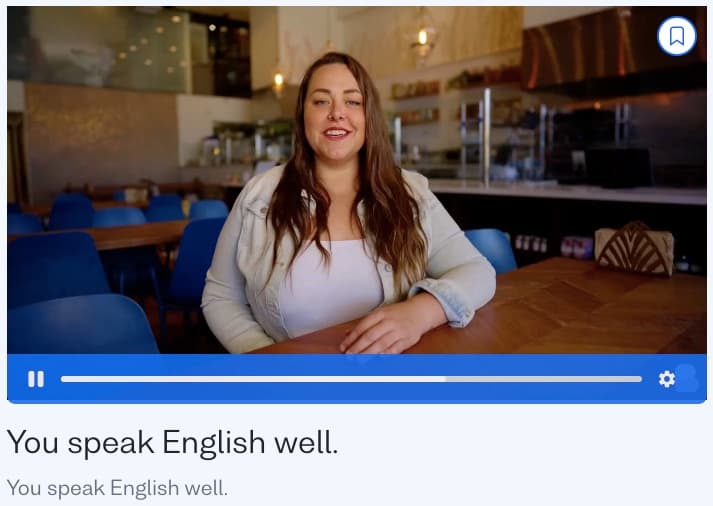I want to learn...
Imperative verbs are often used to instruct the reader or listener on how they should go about doing something. That something is usually a command of some sort. You’ll find imperative verbs in plenty of contexts. They can be used for warnings, advice, providing directions, or making a request. So, let’s get started on using imperative verbs and making them impactful in both writing and conversation.
Imperative definition
The imperative is a grammar structure that’s useful for providing a command or making a request. A sentence with an imperative verb in it is called an imperative sentence. You can use different imperative verbs to form different types of requests or commands.
Here are a few examples:
Clean the kitchen!
Remember to finish your chores.
Look left.
Don’t smoke here.
Keep going!
The verbs (highlighted in bold above) are “clean”, “remember”, “look”, “don’t smoke”, and “keep”. They tell you exactly what to do in the situation. As you can see, these sentences are always in the second person.
This is used instead of the third person, as shown in the example below:
“He cleaned the kitchen.”
Or first person:
“I cleaned the kitchen.”
That’s because they are addressing the person reading or hearing the command. Imperative sentences don’t usually have a subject in the sentence – instead, the second person is implied.
For example, if you read a sign that commands “don’t walk on the grass”, the subject implied is you, or anyone who might read the sign.
If you’re finding this confusing, don’t worry! Remembering patterns will help you along the way. We can show you some quick tips for learning English more easily.
Rules for building an imperative sentence
With the above in mind, it’s time to look at some rules to keep in mind when building an imperative sentence. It’s relatively straightforward – just remember that there’s always an imperative verb, a subject (implied or mentioned somewhere in the sentence), and a punctuation mark at the end of the sentence. This can either be an exclamation mark if you want to add urgency to your tone, or a full-stop if you want your sentence to sound more neutral or less emotional.
It’s also key to bear in mind that imperative sentences are in the simple present tense. This is what makes them different from declarative sentences like: “But I asked you to clean the kitchen!”
As the sentence is in the past tense, it shows that the speaker told the listener that they asked them to clean the kitchen for them, in the past. As such, it is not a command for them to do that now.
Conditional imperative sentences
Conditional imperatives need the first part of a sentence to be satisfied. Let’s break this idea down by checking out an example:
“If we miss the last train home, then call up a taxi.”
The sentence is conditional because of the word“if” here (italicized). “If” introduces what is known as a conditional clause – in this example the first part of the sentence. Imagine that the condition is satisfied in the above example: “we miss the train home”.
Now what? The speaker is giving you the instruction – the imperative – to call up a taxi (so you can get back home safely). Note that the adverb “then” introduces the imperative clause. However, if you didn’t miss the last train home, then the condition isn’t satisfied and there’s no need to call up a taxi.
Tip: As imperative sentences come up time and time again, they’re a great place to start for English beginners.
What are negative imperative sentences?
Not all imperative verbs are there to tell you what to do – sometimes they’re included in a sentence in order to stop someone from acting in a certain way. That’s because imperative verbs can be affirmative or negative depending on the context.
Let’s look at an example sentence:
“Don’t litter here!”
Here, the imperative verb “litter” is made negative by the word “don’t” (highlighted in bold). The sentence is therefore commanding you not to litter in a particular place. If the sign reads “please don’t litter”, then the sentence is still telling you not to do something, but the tone of it is made more polite by the addition of “please”. In the next section, we’ll tackle how to make a polite request.
Making a polite request
Imperative sentences are a direct form. Sometimes in polite conversation, that’s too direct. An effective way of making an imperative sentence more polite – or to soften the tone – is by adding either “just” or “please”, at the beginning or end of that sentence. That way, the sentence becomes less of a command and more of a request; you’re encouraging someone to do something without forcing them. This is very useful in casual conversations, as people don’t usually like being forced to do something without agreeing to it first!
If you know someone particularly well at a bar or cafe and believe it’s acceptable, you might say: “Hey! Make me a cappuccino to go.”
If in doubt, though, using “please” in an imperative sentence can help you avoid an awkward situation.
Tip: Looking to improve your English conversation skills as quickly as possible? Read our 3 Ways to Practise English Conversation Skills Online post for hints and tips!
Active vs passive voice
An imperative sentence has more impact if it’s in the active voice rather than the passive voice. This is because it’s much clearer who you are commanding to do something. Even if the subject isn’t contained in an imperative sentence, an active voice makes its message clearer to the recipient.
Adverbs can help you provide more information
Using adverbs in an imperative sentence can give a better indication to the reader/listener of the way in which you expect something to be done.
Here are some adverbs in imperative sentences so you get the idea:
“Put the glass down slowly!”
“Finish your meal quickly!”
“Run faster!”
If you take out the adverb, then you have a much weaker idea of what the speaker or writer wants you to do. If you took the adverb “faster” out of the imperative sentence “run faster”, then you just wouldn’t be sure how fast to run. In the case of the above example “put the glass down slowly”, if you put the glass down any way you wanted (perhaps too quickly), you might break it, therefore defeating the point of the command entirely.
Final points
Creating basic imperative sentences is quite straightforward in English. However, in everyday conversation or writing, knowing how to make a polite request vs a command is always useful. Adverbs can help your reader or listener know how you want them to do something. Remember to make your imperative sentences more impactful with an active rather than passive voice.
Newlanguages


